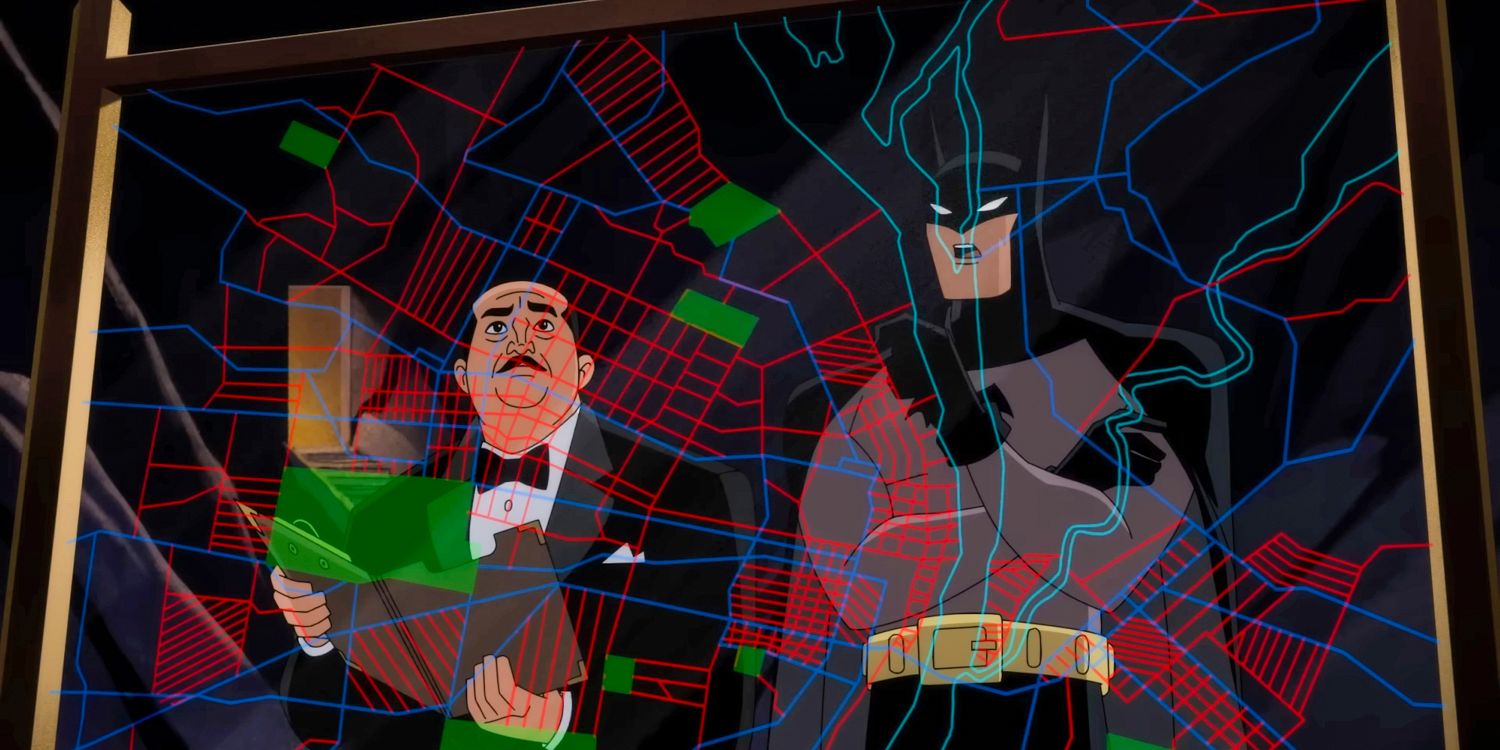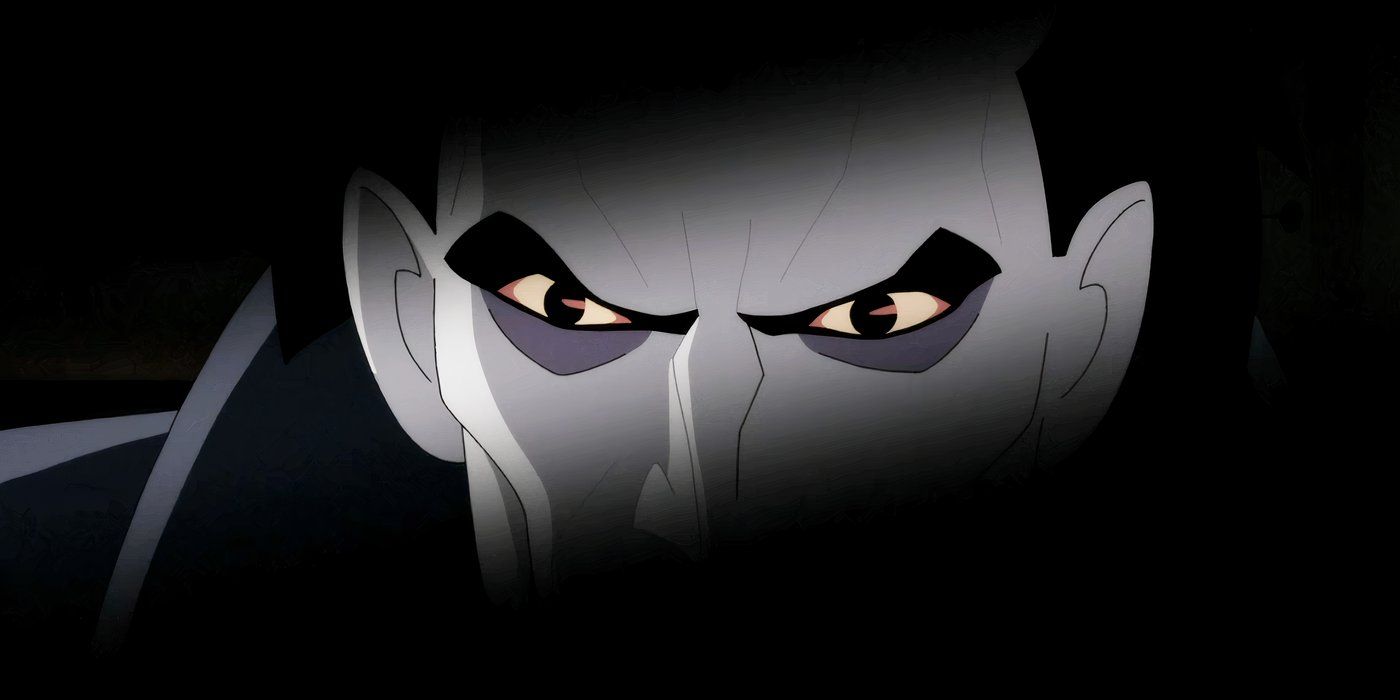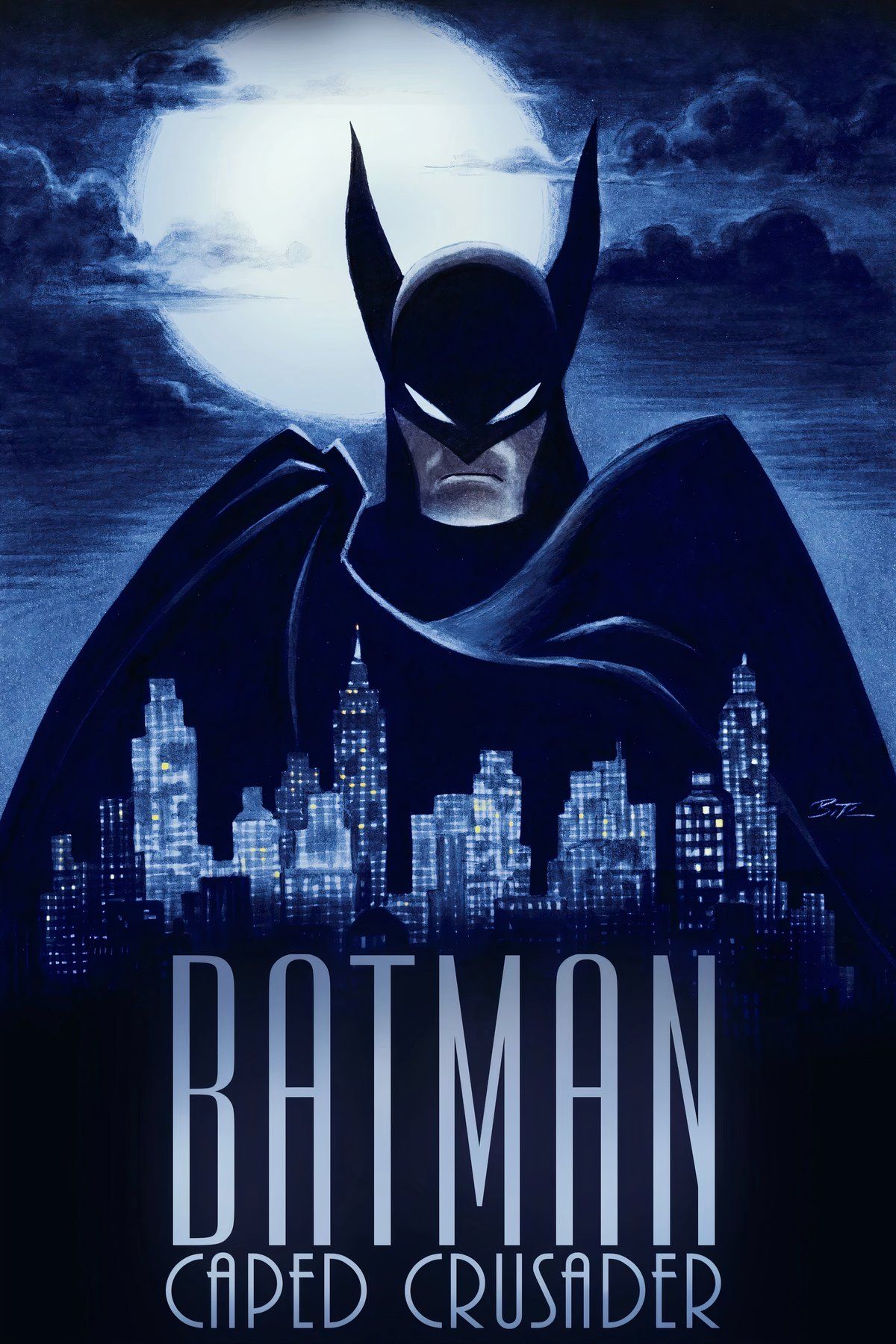Warning! This post contains SPOILERS for Batman: Caped Crusader season 1
Summary
- Batman: Caped Crusader introduces new twists to character origins, including a gender-swapped Penguin and a more nuanced Harvey Dent.
- The series puts a focus on Batman’s detective skills in a low-tech Batcave and new ways to explore Bruce Wayne’s childhood trauma.
- Caped Crusader features altered versions of classic villains like Harley Quinn while teasing a new and darker portrayal of the Joker.
Batman: Caped Crusader features several exciting changes and twists to The Dark Knight’s story. Set in more of the DC’s “Golden Age” of the 1940s, Caped Crusader’s story and origins have some notable differences. However, both his allies and foes have some intriguing twists as well.
Coming from executive producers Bruce Timm, J.J. Abrams, and Matt Reeves, the creative names behind Caped Crusader are quite impressive. Likewise, almost every chapter of the 10-episode animated series features some sort of exciting twist or change, subverting expectations with a new kind of Batman and Gotham City. To that end, here are some of the biggest changes and most surprising changes made to Batman’s story in Caped Crusader.
Related
Every Upcoming DC Movie In 2024 And Beyond
Here’s every new DC movie confirmed as in development by WB for 2024 and onwards, including release dates and where they belong in the franchise.
10 Batman’s Biggest Enemy Isn’t A Supervillain
Rupert Thorne
Rather than being any one of Batman’s rogues considered to be supervillains, Caped Crusader’s overarching antagonist is instead Rubert Thorne. A classic mobster from Bruce Timm’s Batman: The Animated Series, Thorne’s influence has a wide reach over the whole of Gotham. Thorne’s power also grows in this first season following Batman’s defeat of certain rivals such as The Penguin, while also secretly providing “donations” to Harvey Dent’s mayoral campaign, hoping to buy the future mayor’s allegiances.
Thorne’s overall arc and involvement in the origins of Two-Face are very similar to those in Batman: The Animated Series. However, the fact that he plays such a significant role throughout all ten episodes is rather impressive. It certainly helps highlight the fact that the monster that is organized crime can be just as hard for Batman to defeat as any superpowered foe.
9 Batman: Caped Crusader Totally Changes The Penguin’s Character & Story
“Oswalda” Cobblepot
The primary villain of Caped Crusader’s premiere episode, The Penguin debuts as “Oswalda” Cobblepott, a gender-swapped version of the classic Penguin who runs a gambling boat rather than the traditional Iceberg Lounge seen in the comics and in previous Batman media. Voiced by Minnie Driver, Oswalda’s Penguin is also a singer on her boat, looking to be nothing more than a performer running her establishment for Gotham’s wealthy and elite, all while secretly using long-range missiles to take out major buildings owned by her rival, Rupert Thorne.
8 Caped Crusader’s Batman Has Some Notable Tweaks
A True Detective (With Low-Tech)
Caped Crusader is essentially a version of Year One set in the 1940s Golden Age. As such, Batman’s costume features the classic extra-long ears on the cowl he used to have in his very first Detective Comics issues. Furthermore, this version of the Dark Knight is much more low-tech than any other previous iteration of Batman seen on-screen, forcing an emphasis on more classic detective work.
The Batcave is completely analog, full of file cabinets, books, and microfilm (no Batcomputers in sight). Likewise, Batman’s primary tools for combat are solely his batrangs, bolas, and smoke bombs. While he does still have a Batmobile, even Batman’s grappling hook looks to be non-retractable.
7 A Refreshing Focus On Bruce Wayne
Denying His Dark Trauma
Caped Crusader also features a refreshing look at what truly made Bruce Wayne become Batman, and how he’s handled (or hasn’t) his childhood trauma resulting from his parents’ murder. This is the result of court-ordered therapy for Bruce in the show’s third episode (a genius idea to actually get The Dark Knight in a psychiatrist’s chair). Even though the sessions are conducted by one Dr. Harleen Quinzel, it does highlight just how much Bruce has refused to process and heal from his trauma, hence his dark commitment as a child to “make the criminals pay” as he woke Alfred in the middle of the night with haunted eyes.
6 Batman’s Still Developing Relationship With Alfred
“That Will Be All, Pennyworth”
As a younger Dark Knight, Caped Crusader features a surprising and very cold relationship between Bruce and Alfred Pennyworth. Rather than Alfred being Bruce’s surrogate father as he is in most depictions, both on the page and on screen, Bruce gives Alfred orders with indifference, rejecting many of his attempts to express care and concern for him. It’s only until the end of the first season that Batman calls his butler “Alfred”, rather than “Pennyworth”, a sign that their relationship is growing and evolving into something more traditional and familial.
5 Batman: Caped Crusader Totally Changes Two-Face’s Story
Harvey Dent Was Running For Mayor
Already the District Attorney, Harvey Dent’s mayoral campaign is in full swing in Caped Crusader. However, Dent is surprisingly more morally ambiguous before his disfigurement. Fearing low polling numbers and losing the election, Dent turns to Rupert Thorne for campaign money with the initial promise that he’d do whatever Thorne asked of him. However, Dent ultimately refusing to do Thorne is what results in acid being thrown on half his face.
After becoming Two-Face, Dent grows to become more noble. His “good side” becomes stronger as he struggles with the actions of his “bad side”, ultimately leading to his sacrifice to save Barbara Gordon as seen in the season finale of Caped Crusader. As such, it’s an incredibly intriguing and satisfying take on the character, with Two-Face’s origins quietly literally being flipped, seeing as how most versions have Two-Face disfigurement on the right side of his face, while Caped Crusader’s has it on the left. He got to die as a hero, rather than a villain.
4 Onomatopoeia Debuts As One Of Batman’s First Villains
“Dun, Dun, Dunnn!”
Typically working alone in the comics, Onomatopoeia debuts in Caped Crusader as the leader of a group of hit-men rather than a lone serial killer seeking to kill vigilantes. Having been hired to kill Barabara Gordon, it’s fascinating to see this new take on the villain created in 2002 with more of a Golden Age lens. Likewise, the animated series does a great job maintaining the threat and danger of the DC villain despite his predilection for only speaking in sound effects, something the Onomatopoeia’s original creator Kevin Smith feared wouldn’t work well beyond the page.
3 Caped Crusader’s Catwoman Has Altered Origins
A Wealthy Background For Selina Kyle
Voiced by Christina Ricci, Selina Kyle has an intriguing new origin compared to those seen in the comics and elsewhere. Rather than growing up on the streets of Gotham alone, Caped Crusader’s Selina Kyle comes from wealth. While that didn’t stop her from enjoying the thrill of being a thief, she only ever got slaps on the wrist thanks to her father. However, Selina’s father being jailed for tax fraud forces Kyle to make cat burglaring her new career, while also being heavily inspired by Batman, essentially becoming a true “copycat”. That said, the classic infatuation and romance between the Bat and Cat remains.
2 Caped Crusader’s Harley Quinn Is Also Drastically Altered
No Joker, But All Kinds of Dangerous
One of the biggest and most exciting changes in Caped Crusader is the origins and background of Harley Quinn (voiced by Jamie Chung). Appearing to have zero connections to The Joker, this version of Harley decides that her sessions with Gothan’s elite as Harleen Quinzel aren’t enough. Taking her practice to extreme levels, Harley Quinn abducts and brainwashes several of Gotham’s most corrupt, turning them into her adoring servants as a dark vigilante.
According to Bruce Timm, this version of Harley Quinn is what he’d always envisioned for the original version of the character in Batman: The AnimatedSeries. However, he ultimately he received pushback due to fears that she was too scary for a kids’ show. Now, this version of Harley Quinn is finally realized thanks to Caped Crusader, one whose fate remains a mystery in the aftermath of her facility being destroyed after a confrontation with Batman and her friend Barbara Gordon.
1 Caped Crusader’s Joker Tease Suggests A Very Different Clown Prince Of Crime
Will This Joker Even Laugh?
At the very end of The Caped Crusader, a brand-new version of the Joker is teased. However, this doesn’t appear to be a traditional Clown Prince of Crime like the more sadistically gleeful version voiced by Mark Hamill in Batman: The Animated Series. Seemingly perfecting his classic toxin that turns victims all white as they die laughing with massive post-mortem grins, Joker’s voice is very low and sinister, suggesting that he may be introduced as more of a dark serial killer, rather than the more classic clown/comedian type.
It would certainly be interesting if Caped Crusader’s new Joker doesn’t laugh at all, instead only making his victims laugh via his toxins. Likewise, it would also be exciting if this Joker is more serious and is perhaps looking to move in on Thorne’s territories in future seasons as Gotham’s next kingpin of crime. Either way, the ending of Caped Crusader does promise a new kind of Joker, one that will certainly be exciting to see down the line.
All episodes of Batman: Caped Crusader are now streaming on Amazon Prime.





